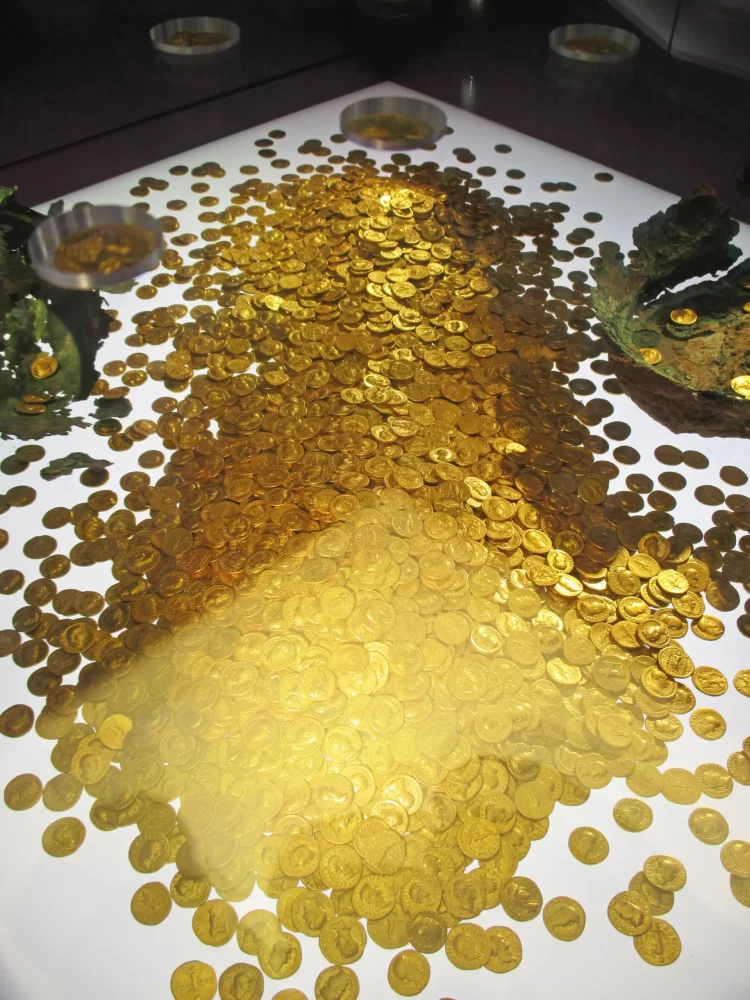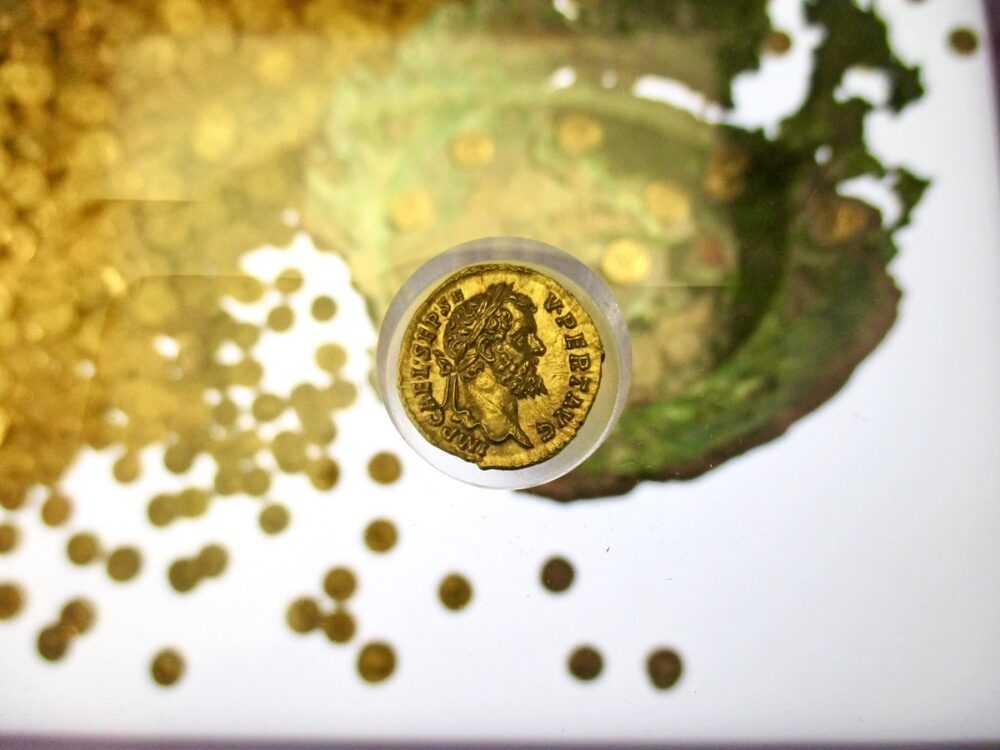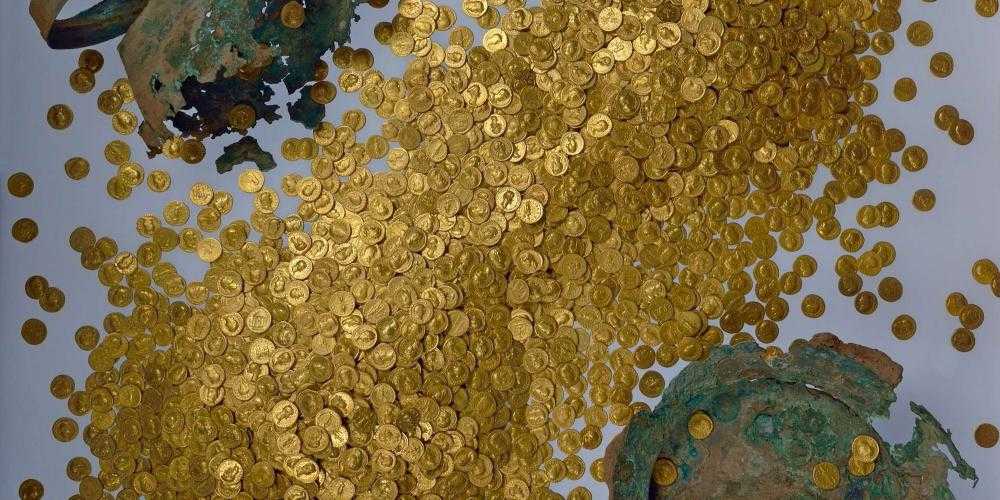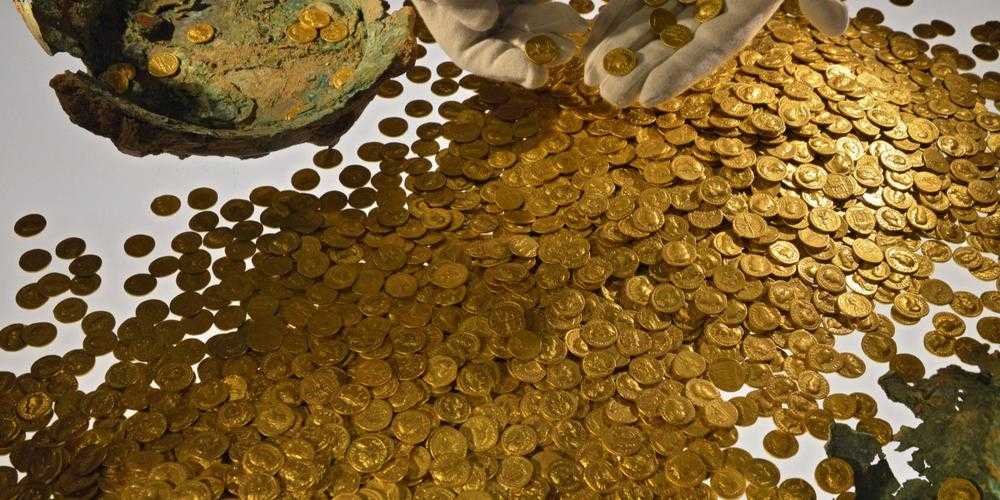
Unearthed in 1993, more than 1,800 years after its initial concealment, the Trier Gold Hoard stands as the oldest Roman gold hoard ever found. This treasure, likely not amassed by an individual but rather an official repository, was diligently overseen and expanded over the course of centuries.
The Aurei encompass a total of 27 emperors, empresses, and members of the imperial family, with some still regarded as distinctive to this day.


In 196 AD, gold coins were concealed in a basement during a civil war. Clodius Albinus initiated a revolt against Emperor Septimius Severus, who had appointed his son Caracalla as his successor, bypassing Albinus.
It is presumed that the former treasury manager carried the knowledge of this secret treasure to the grave. The revelation of the Trier gold hoard provides historians and archaeologists with insight into the tumultuous landscape of Roman politics and the intricate mechanisms of the Roman treasury.

Today, the Trier Gold Treasure is showcased in the coin collection of the Rhenish Regional Museum in Trier. The presentation room dedicated to the Gold Hoard offers comprehensive insights into the evolution of the monetary system, detailing the production of money throughout ancient, medieval, and modern eras.
The exhibition serves as a testament to the significance of the Roman Empire and its enduring impact on contemporary society.

The Trier Gold Hoard stands as a valuable and unique historical artifact, offering crucial insights into the history and operations of the Roman Empire. The unearthing of this treasure has played a pivotal role in aiding historians and archaeologists in piecing together the intricate tapestry of Roman politics and economy. Its discovery continues to furnish valuable information, contributing significantly to our understanding of this bygone era.

The Trier Gold Hoard symbolizes the power, wealth, and intricacy of the Roman Empire. It stands as a testament to the importance of preserving historical artifacts and the invaluable insights they offer into our understanding of history and our position in the world.
This treasure remains a fundamental component of the rich cultural heritage of the Roman Empire, making a substantial contribution to human history. Its significance goes beyond its material value, acting as a tangible link to a bygone era that continues to enrich our appreciation of the complexities of ancient civilizations.





